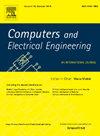An adaptive feature fusion framework of CNN and GNN for histopathology images classification
IF 4
3区 计算机科学
Q1 COMPUTER SCIENCE, HARDWARE & ARCHITECTURE
引用次数: 0
Abstract
This study introduces an Adaptive Feature Fusion Classification Network (AFFC![]() Net) designed for cancer detection in histopathology images. AFFC
Net) designed for cancer detection in histopathology images. AFFC![]() Net leverages Convolutional Neural Network (CNN) and Graph Neural Network (GNN) as parallel feature extractors, significantly improving the ability to capture complex histopathological features. The network includes an adaptive feature fusion module that weights and fuses features from the two branches using adaptive scaling factor and attention mechanisms. The fused features are subsequently utilized to construct a graph structure. The global feature aggregation unit then performs sampling and aggregation on this graph to extract high-level semantic features. Experimental results demonstrate the effectiveness of AFFC
Net leverages Convolutional Neural Network (CNN) and Graph Neural Network (GNN) as parallel feature extractors, significantly improving the ability to capture complex histopathological features. The network includes an adaptive feature fusion module that weights and fuses features from the two branches using adaptive scaling factor and attention mechanisms. The fused features are subsequently utilized to construct a graph structure. The global feature aggregation unit then performs sampling and aggregation on this graph to extract high-level semantic features. Experimental results demonstrate the effectiveness of AFFC![]() Net. On the BRACS dataset, a breast cancer subtype pathology image dataset containing 4391 images, the model achieved an F1-score of 67.23 %, representing a 2.83 % improvement over previous methods. On the LC25000 dataset, a pathology image dataset of lung and colon tissues containing 25,000 images, it achieved Precision, Recall, Specificity, Accuracy, and F1-score of 99.84 %, 99.84 %, 99.96 %, 99.84 %, and 99.84 %, respectively, showing improvements of 1.36 %, 0.37 %, 0.34 %, 0.45 %, and 0.52 % compared to existing approaches. These results highlight AFFC
Net. On the BRACS dataset, a breast cancer subtype pathology image dataset containing 4391 images, the model achieved an F1-score of 67.23 %, representing a 2.83 % improvement over previous methods. On the LC25000 dataset, a pathology image dataset of lung and colon tissues containing 25,000 images, it achieved Precision, Recall, Specificity, Accuracy, and F1-score of 99.84 %, 99.84 %, 99.96 %, 99.84 %, and 99.84 %, respectively, showing improvements of 1.36 %, 0.37 %, 0.34 %, 0.45 %, and 0.52 % compared to existing approaches. These results highlight AFFC![]() Net's capability to leverage advanced semantic features and achieve competitive performance compared to state-of-the-art methods.
Net's capability to leverage advanced semantic features and achieve competitive performance compared to state-of-the-art methods.

求助全文
约1分钟内获得全文
求助全文
来源期刊

Computers & Electrical Engineering
工程技术-工程:电子与电气
CiteScore
9.20
自引率
7.00%
发文量
661
审稿时长
47 days
期刊介绍:
The impact of computers has nowhere been more revolutionary than in electrical engineering. The design, analysis, and operation of electrical and electronic systems are now dominated by computers, a transformation that has been motivated by the natural ease of interface between computers and electrical systems, and the promise of spectacular improvements in speed and efficiency.
Published since 1973, Computers & Electrical Engineering provides rapid publication of topical research into the integration of computer technology and computational techniques with electrical and electronic systems. The journal publishes papers featuring novel implementations of computers and computational techniques in areas like signal and image processing, high-performance computing, parallel processing, and communications. Special attention will be paid to papers describing innovative architectures, algorithms, and software tools.
 求助内容:
求助内容: 应助结果提醒方式:
应助结果提醒方式:


